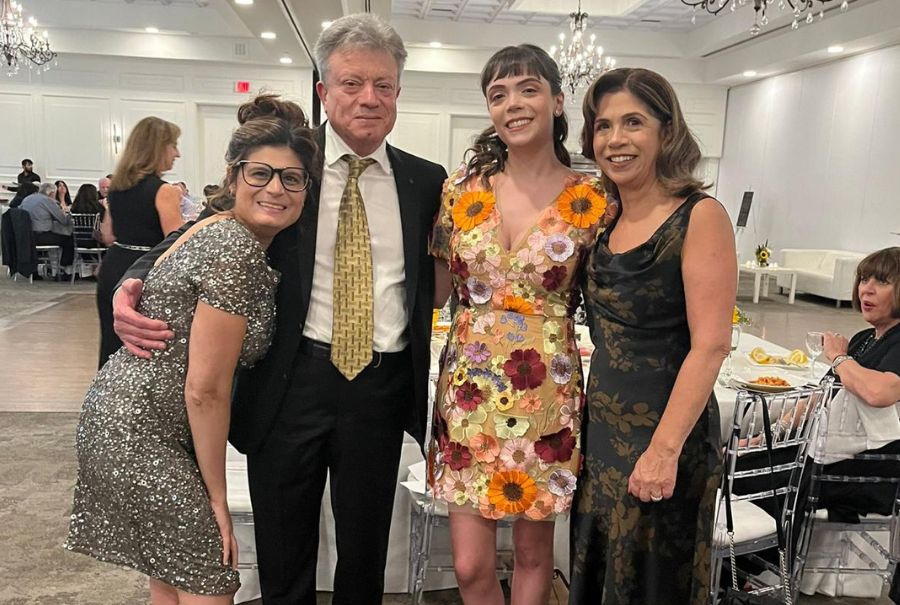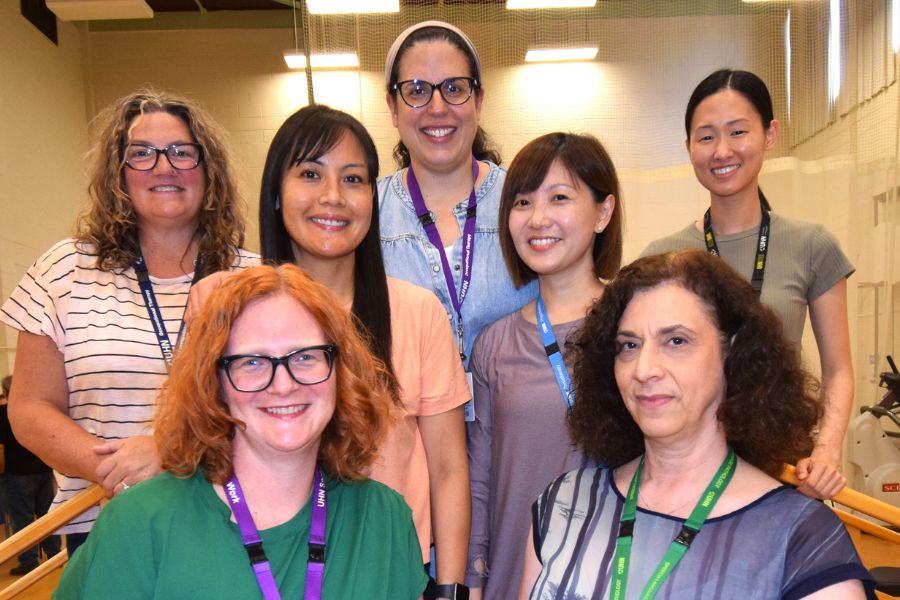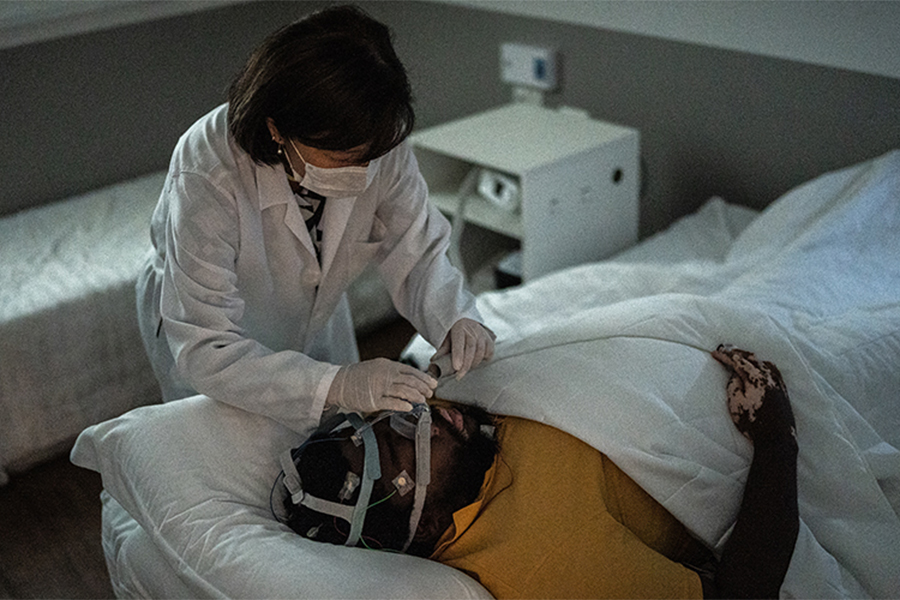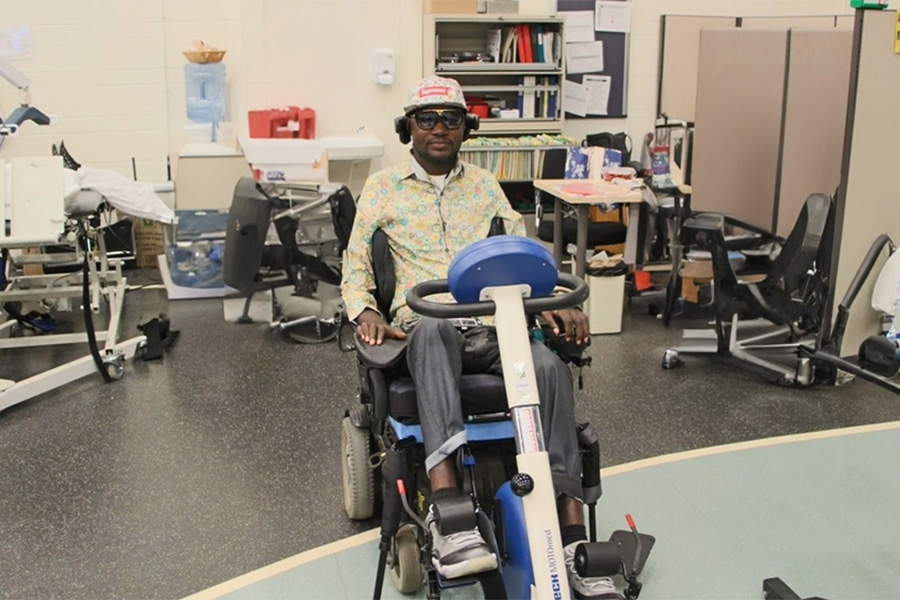
For Benjamin (Ben) Kwarteng, the process of healing after his spinal cord injury was more than physical rehabilitation.
“I would go almost a month without looking at myself in the mirror and when I did, I would compare it to the person I used to be,” he says. “It took several months for me to realize that it wasn’t just physical abilities I had lost, but also my personality and feelings of self-worth.
“I felt defeated by my injury, until I received support.”
That support came from a care team at Toronto Rehab, Lyndhurst Centre, who helped him leverage the power of assistive technology to start getting his life back.
At age 18, Ben was visiting his birth country of Ghana from his new home in the Toronto area when an automotive accident left him in critical care for several weeks, paralyzed from the neck down.
After multiple surgeries, Ben was able to come home to Canada to start his rehabilitation journey at Toronto Rehab, where interdisciplinary teams are dedicated to helping patients with a spinal cord injury (SCI) become as independent as possible as they transition back into their daily lives and communities.
“The realization that I could no longer move any of my limbs, coupled with the inability to communicate with loved ones (by phone) in Brampton and Sudbury intensified the emotional toll,” Ben recalls. “But with the use of assistive technologies and support from my health care team, I found ways to regain independence and find my purpose again.”
Harnessing the power of technology
Occupational therapist Anita Salehoun and rehab engineer Carol Scovil often join forces at Lyndhurst Centre to provide patients with solutions to barriers caused by their SCI. That can include finding a way to enhance the patient’s recovery through assistive technology.
And, their first consultation sometimes happens within 48 hours of the patient’s arrival.
“We find that almost all of our patients want to immediately be able to use a phone or tablet, so we start by finding solutions for them to continue using these devices, as soon as possible,” says Anita. “That way, even in a place that is unfamiliar, patients can stay connected to loved ones and maintain a sense of normalcy.”
This is achieved by teaching patients how to enable elements such as voice recognition software, which are often already built into a patient’s device, installing phone and tablet mounts, so patients can access these devices more easily. They also work with patients to apply for Ontario’s Assistive Devices Program, which can be used to access more complex features, such as eye-gaze modules, tablets and more.
Assistive technology has played a big role in Ben’s recovery. He now uses a head-mousing system that is connected to a computer, which he can independently control by moving his head.
“This technology has been instrumental in my recovery journey since it showed me that I still do have independence, just in a different way,” he says.
Peer Partnerships
Ben’s experience with recovery compelled him to want to help others going through a similar situation. UHN’s partnership with Spinal Cord Injury Ontario’s Peer Support Program, allows him to do that.
The Peer Support program matches a patient with an individual who can share their own personal experiences living with an SCI.
Rick Watters, the Peer Program Coordinator of Spinal Cord Injury Ontario, who, himself, has more than 45 years of lived experience with an SCI, has seen how patients build back their confidence with the right support network.
“What I love about combining new technology with peer support is that both can be used together to show people the possibilities of overcoming barriers to improve their quality of life,” Rick says.
Through his participation in the Peer Support program, Ben was inspired to try to reach even more people with SCI. To that end, he’s in the process of developing an app that helps connect individual personal support workers with new clients.
“Everyone’s healing journey is different,” Ben says. “I recognize how many other people are out there going through a similar situation and I want to support in any way I can.
“No one’s recovery is linear, but every year, I continue to learn and become more confident living with my spinal cord injury.”
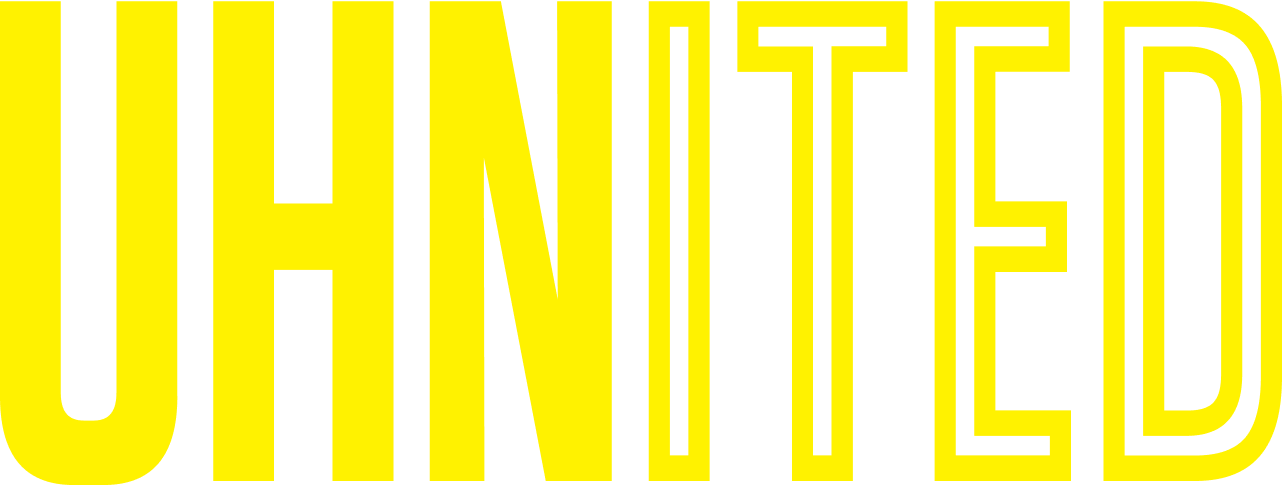
No one ever changed the world on their own but when the bright minds at UHN work together with donors we can redefine the world of health care together.
